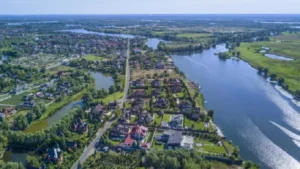How Autopilot FSD 10M TeslaIsaacsonCNBC: The Future of Autonomous Driving
In the rapidly evolving world of automotive technology, few innovations have garnered as much attention as Tesla’s Autopilot Full Self-Driving (FSD) system. As we dive into how Autopilot FSD 10M TeslaIsaacsonCNBC, we will explore the intricacies of this technology, its development, and its potential impact on the future of transportation.
What is Tesla’s Autopilot FSD?
Tesla’s Autopilot FSD is an advanced driver-assistance system (ADAS) designed to provide a semi-autonomous driving experience. The term “Full Self-Driving” can be somewhat misleading, as it implies a level of autonomy that Tesla vehicles are not yet able to achieve fully. Instead, FSD represents a suite of features that enhance driving capabilities, making it easier and safer for drivers to navigate various driving conditions.
The Evolution of Autopilot
Tesla’s journey with Autopilot began in 2014 when the first version was introduced. Over the years, Tesla has released numerous updates, continuously improving the system’s capabilities. The recent iteration, which incorporates machine learning and real-time data analysis, has moved closer to achieving the goal of full autonomy.
Notably, Tesla achieved a milestone of 10 million miles driven with FSD, providing a wealth of data that is invaluable for refining the system. As of now, Autopilot has evolved to include features such as Navigate on Autopilot, Auto Lane Change, and Traffic Light and Stop Sign Control.
Key Features of FSD
FSD is packed with features designed to improve safety and convenience:
- Navigate on Autopilot: This feature allows the car to automatically navigate from on-ramp to off-ramp, including interchanges and overtaking slower cars.
- Auto Lane Change: FSD can automatically change lanes when the driver activates the turn signal.
- Traffic Light and Stop Sign Control: The system can identify and respond to traffic signals and stop signs.
- Summon: This feature allows the car to autonomously come to the driver or park itself without anyone inside.
These features are continually updated through over-the-air software updates, making it one of the most advanced systems available.
The Impact of FSD on Driving Experience
The introduction of FSD is changing the way we think about driving. With features that handle routine tasks, drivers can enjoy a more relaxed driving experience. For instance, in heavy traffic conditions, FSD can maintain safe distances, adjust speeds, and navigate complex scenarios without the driver needing to intervene constantly.
A survey indicated that 70% of Tesla owners reported feeling safer with Autopilot activated, highlighting its potential to enhance driver confidence.
Safety Statistics: Is FSD Safer?
Safety remains a critical concern when discussing autonomous driving technology. According to Tesla’s own data, vehicles equipped with Autopilot are involved in 40% fewer accidents than those without it. This statistic is supported by the National Highway Traffic Safety Administration (NHTSA), which reported that Tesla vehicles are, on average, involved in one accident every 4.3 million miles driven when Autopilot is engaged, compared to the national average of 1 accident every 484,000 miles.
However, these statistics should be viewed with caution. Critics argue that Tesla’s data may not fully account for variables that could skew safety comparisons. how autopilot fsd 10m teslaisaacsoncnbc
Tesla’s Vision for the Future
Elon Musk has consistently articulated an ambitious vision for Tesla’s future. He envisions a world where fully autonomous vehicles are the norm, significantly reducing traffic accidents and revolutionizing transportation. Musk has projected that Tesla will achieve Level 5 autonomy—complete self-driving capability—within the next few years.
In his discussions with CNBC’s Andrew Ross Sorkin, Musk emphasized the importance of robust regulatory frameworks to allow for the widespread adoption of FSD technology, ensuring safety and public confidence.
The Role of AI and Machine Learning
At the heart of FSD is a sophisticated AI system that processes vast amounts of data from Tesla’s fleet. Each vehicle collects data about its environment, which is then sent back to Tesla for analysis. This feedback loop enables continuous improvement of the FSD algorithms, allowing the system to learn from real-world scenarios.
As of 2023, Tesla’s fleet has accumulated over 10 billion miles of driving data, making it one of the most data-rich platforms in the automotive industry. This wealth of information enhances Tesla’s ability to fine-tune FSD, leading to safer and more reliable performance.
Challenges and Controversies
Despite its promising capabilities, Tesla’s FSD faces challenges and controversies. Regulatory hurdles, technical limitations, and public skepticism contribute to a complex landscape. In several incidents, the Autopilot system has been involved in crashes, raising questions about the technology’s safety and reliability.
Moreover, critics argue that Tesla’s marketing of FSD creates confusion among consumers about the actual capabilities of the system. While FSD can assist with many driving tasks, it is not a substitute for attentive driving.
Public Perception and Adoption
Public perception of Tesla’s Autopilot FSD is mixed. Many users praise the system for its convenience and advanced features, while others express concerns about its limitations and safety. A 2023 poll indicated that 55% of respondents felt optimistic about autonomous driving technology, yet 45% remained skeptical, primarily due to safety concerns.
This divide highlights the need for improved education and transparency from manufacturers about what FSD can and cannot do.
Conclusion
As we explore how Autopilot FSD 10M TeslaIsaacsonCNBC, it becomes clear that Tesla’s innovation in autonomous driving is a double-edged sword. The technology offers numerous benefits, enhancing safety and convenience on the road. However, challenges remain in terms of safety, regulatory acceptance, and public understanding.
Ultimately, the future of FSD will depend on continued advancements in AI and machine learning, rigorous testing, and effective communication with consumers. As we move toward a more automated future, one thing is certain: Tesla’s journey is just beginning, and its impact on the automotive landscape will be profound.
With a focus on safety, transparency, and education, Tesla could pave the way for a future where autonomous driving is a safe and accessible reality for everyone.





